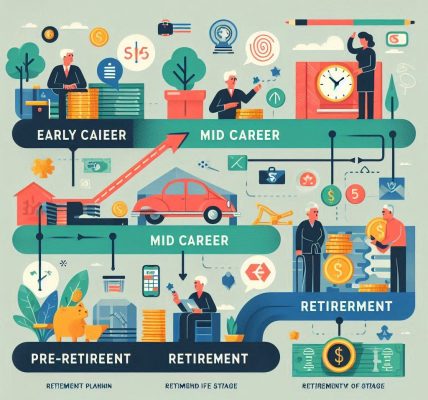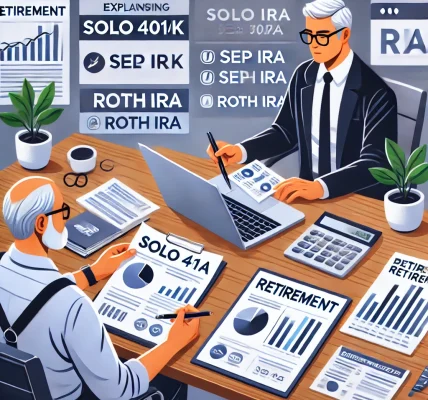Introduction
Retirement planning is an essential part of financial security, but one of the biggest decisions individuals face is choosing between private and public retirement plans. Both types of plans offer distinct benefits and risks, making it crucial to understand their differences before committing to one.
This article provides an in-depth comparison of private and public retirement plans, analyzing their security, advantages, and potential drawbacks to help you make an informed decision.
1. Understanding Private and Public Retirement Plans
What are Public Retirement Plans?
Public retirement plans are government-backed plans that provide financial support to retirees. These plans are typically funded by taxes, employee contributions, and employer contributions.
Examples of Public Retirement Plans:
✅ Social Security (USA) – A federal program providing monthly retirement benefits. ✅ Pension Plans for Government Employees – Guaranteed pensions for federal, state, and local government workers. ✅ Thrift Savings Plan (TSP) – A retirement plan for federal employees and military personnel. ✅ National Pension System (India) – A government-supported savings scheme with investment flexibility.
What are Private Retirement Plans?
Private retirement plans are offered by private employers or financial institutions, allowing individuals to contribute and invest funds for their retirement.
Examples of Private Retirement Plans:
✅ 401(k) (USA) – An employer-sponsored plan with tax advantages and employer matching. ✅ Individual Retirement Account (IRA) – A self-funded retirement savings account with tax benefits. ✅ Defined Benefit Pension Plans (Private Sector) – Company-sponsored pensions for eligible employees. ✅ Superannuation Funds (Australia) – Private investment-based retirement accounts.
2. Security & Stability: Public vs. Private Retirement Plans
Public Retirement Plans – Stability & Security
✔ Government-backed: Less risk of insolvency compared to private sector plans. ✔ Guaranteed income: Programs like Social Security provide lifelong payouts. ✔ Inflation adjustments: Many government pensions include cost-of-living adjustments (COLA). ✔ Lower risk: Not dependent on stock market performance.
❌ Potential drawbacks:
- Lower flexibility: Fixed benefits and fewer investment choices.
- Funding challenges: Risk of future benefit reductions due to government deficits.
- Limited eligibility: Some public plans are only available for government employees.
Private Retirement Plans – Security & Risks
✔ Greater control: You decide investment strategies based on risk tolerance. ✔ Higher growth potential: Market investments may yield better returns than public pensions. ✔ Employer contributions: Some plans offer employer-matching funds. ✔ Tax benefits: Private plans often provide tax advantages on contributions and growth.
❌ Potential drawbacks:
- Market risk: Investments are subject to economic fluctuations.
- Employer-dependent: If a company closes, pensions or 401(k) contributions may be affected.
- No guaranteed payout: Unlike Social Security, private plans depend on investment performance.
3. Contribution Limits & Benefits
| Feature | Public Retirement Plans | Private Retirement Plans |
|---|---|---|
| Contribution Type | Fixed (set by government) | Flexible (depends on individual contributions) |
| Employer Match | Sometimes (for government employees) | Often available (varies by employer) |
| Investment Choices | Limited | Diverse (stocks, bonds, mutual funds, etc.) |
| Risk Level | Low | Moderate to high, depending on market performance |
| Guaranteed Payout | Yes (Social Security, pensions) | No, depends on investment returns |
| Tax Benefits | Tax-advantaged contributions | Tax benefits vary based on account type |
4. Which Retirement Plan is More Secure?
When Public Plans Offer Better Security:
- If you prefer a guaranteed, stable income during retirement.
- If you are a government employee eligible for pension plans.
- If you are risk-averse and want protection from market downturns.
- If you rely on Social Security or a similar government scheme for basic retirement needs.
When Private Plans Offer Better Security:
- If you want higher growth potential through investments.
- If you want flexibility in contributions, withdrawals, and investment choices.
- If you are looking for early retirement options not dependent on government programs.
- If you have access to a 401(k) with employer matching, maximizing contributions.
5. Hybrid Approach: Best of Both Worlds
Many financial experts recommend combining both public and private retirement plans for optimal security. Here’s how:
✔ Use Public Plans as a Safety Net: Rely on Social Security or pension plans for a stable income base. ✔ Maximize Private Investments: Contribute to a 401(k), IRA, or other private savings for additional income. ✔ Diversify Assets: Spread investments across different financial instruments to reduce risk. ✔ Start Early: The earlier you invest in both types of plans, the more financial security you’ll have.
Conclusion: Choosing the Right Plan for Your Future
Both public and private retirement plans have advantages and disadvantages. If you value stability and guaranteed income, public plans like Social Security or pensions may be the right choice. If you want higher potential returns and investment flexibility, private plans like 401(k)s and IRAs are excellent options.
To achieve the best retirement security, consider a balanced approach, leveraging both types of plans to ensure financial stability and long-term growth. No matter which route you take, early planning and consistent saving will be key to a comfortable and secure retirement.




